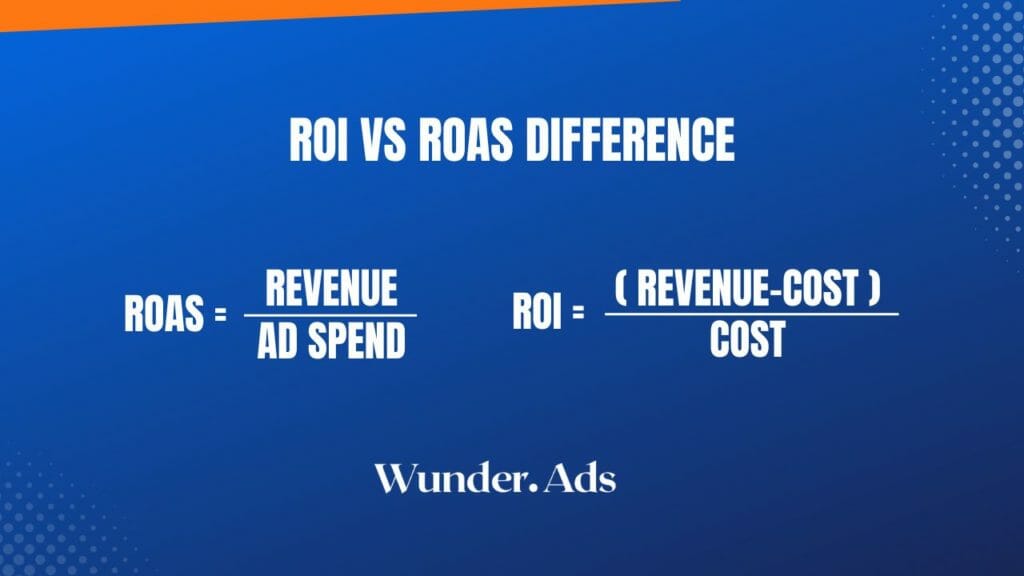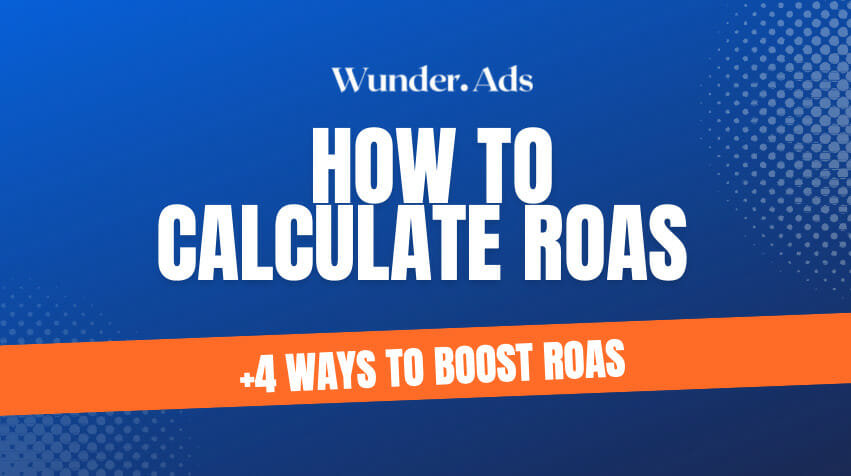If you’re just starting eCommerce marketing, you must ensure that your overall strategy is in place. And one important thing to begin with is your ROAS, knowing how to calculate it, and what you can do to increase it!
That’s exactly why I’m going to explain how you can use four strategies for long-term ROAS improvement.
But first, you must begin by understanding: what is ROAS?
What Is ROAS?
ROAS, which stands for Return On Advertising Spend, is a popular marketing metric in the PPC industry.
It is used to measure the effectiveness of an advertising campaign, and it tells you how much money you make from every dollar spent on your ads.
This isn’t rocket science, it can be used by any advertiser that wishes to take a more proactive approach in their PPC efforts.
Several platforms, such as Google Ads and Facebook, calculate your ROAS for you. On Google Ads, this is typically displayed as “Conversion Value / Cost.” And on Facebook, it’s displayed as “Purchase ROAS.”
But with a plethora of data at your fingertips, your ROAS is easy to calculate by yourself, and once you do, it will give you a clear idea of the bigger picture!
The ROAS Formula
The process of calculating ROAS is relatively straightforward. It has a pretty simple formula, and it’s easy to understand.
All you have to do is divide the value that you get from your revenue by the money you spend on advertising. To sum this up, you should get a formula that looks like this:

The result you get can either be presented as a percentage, ratio or cash amount.
So, the higher the ROAS, the more the company profits from its marketing efforts!
While this number does have its flaws, the consensus is that the higher the return is, the more effective your digital advertising campaign is.
To explain things in more detail, let’s see this in action.
Let’s say you spent $1,000 on ads in one month and generated $2000 in revenue. This is a 200% return, or 2:1. In other words, you get two dollars for every dollar you put in.
The same $1000 investment in ad spend returns $5000 the following month; therefore, you now have a 500% return, or 5:1.
The formula is extremely simple, so you don’t need to be an expert to understand it and calculate your ROAS on your own!
ROI VS ROAS Difference
When calculating ROAS, it’s crucial to remember that ROAS and ROI, or return on investment, are not the same thing.
Both ROI and ROAS are numerical profit indicators, making them very similar to each other. But they do function differently and show different things. And, of course, they both require a different formula to calculate!
Using ROAS, advertisers can measure the effectiveness of their digital marketing campaigns. Every dollar spent on advertising is directly compared to the gross revenue generated from it.
The ROI metric, on the other hand, accounts for expenses, ad costs and other expenditures, as well as what you spend on advertisements.
ROAS indicates the return on advertising investment, whereas ROI indicates the amount of money invested in a process overall.

Here’s a quick tip you can use: your ROI is equal to your ROAS minus one. For instance, a ROI of 4 is equivalent to a ROAS of 5.
These calculations help get a quick understanding of the numbers of dollars made, versus dollars spent. But no ROAS or ROI figure guarantees profitability for everyone’s ad account.
While ROAS is a simple ratio of earnings and expenses, you may prefer ROI to better understand your earnings after costs. You might wonder, what is the use of knowing your ROAS?



